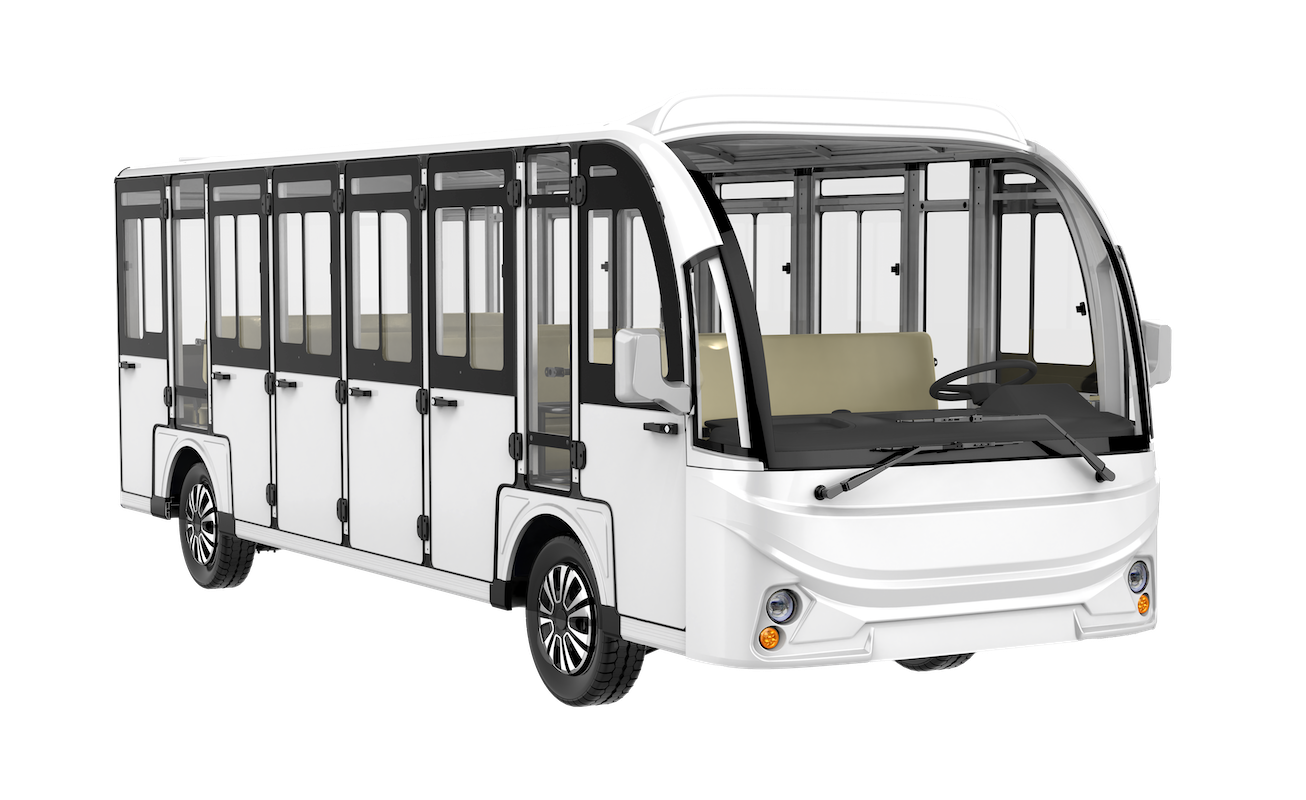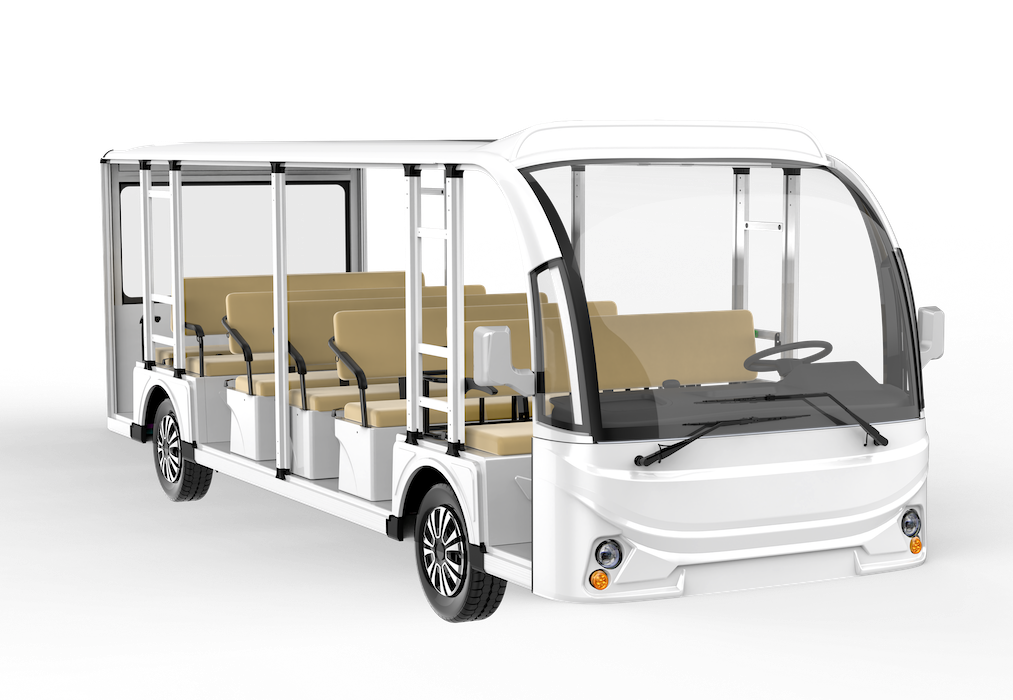Content Menu
● Understanding the 23 Seater Electric Sightseeing Bus
>> What is an Electric Sightseeing Bus?
>> Key Features of the 23 Seater Electric Sightseeing Bus
● Environmental Impact
>> Reducing Carbon Footprint
>> Promoting Clean Air
● Economic Benefits
>> Cost Savings on Fuel
>> Job Creation in the Green Economy
● Enhancing the Tourist Experience
>> Comfort and Convenience
>> Accessibility for All
● Technological Advancements
>> Smart Features and Connectivity
>> Battery Technology Improvements
● Challenges and Considerations
>> Initial Investment Costs
>> Infrastructure Development
● Future of Electric Sightseeing Buses
>> Growing Demand for Sustainable Tourism
>> Innovations on the Horizon
● Frequently Asked and Questions regarding 23 Seater Electric Sightseeing Bus
>> 1. What are the maintenance requirements for a 23-seater electric sightseeing bus?
>> 2. How does the range of a 23-seater electric sightseeing bus affect its route planning?
>> 3. What government incentives are available for purchasing electric sightseeing buses?
>> 4. How do electric sightseeing buses contribute to the local economy?
>> 5. What are the safety features of a 23-seater electric sightseeing bus?
In recent years, the demand for sustainable transportation solutions has surged, particularly in the tourism sector. One innovative solution that has gained traction is the 23 seater electric sightseeing bus. This article explores the numerous benefits of this eco-friendly vehicle, its design features, operational advantages, and its impact on the environment and tourism industry.
Understanding the 23 Seater Electric Sightseeing Bus
What is an Electric Sightseeing Bus?
An electric sightseeing bus is a vehicle designed specifically for transporting tourists in urban areas, parks, and other scenic locations. Unlike traditional buses that run on fossil fuels, electric buses are powered by electricity, making them a cleaner and more sustainable option. The 23 seater configuration allows for a comfortable ride for small to medium-sized groups, making it ideal for guided tours. These buses are often equipped with features that enhance the sightseeing experience, such as panoramic windows and informative audio systems, allowing passengers to fully immerse themselves in the sights and sounds of their surroundings.
Key Features of the 23 Seater Electric Sightseeing Bus
The design of the 23 seater electric sightseeing bus incorporates several features that enhance the passenger experience. These buses are equipped with large windows for optimal viewing, comfortable seating, and often include amenities such as air conditioning and audio-visual systems for informative tours. The electric drivetrain ensures a quiet and smooth ride, allowing passengers to enjoy the sights without the noise and vibration associated with traditional buses. Additionally, many electric sightseeing buses come with advanced safety features, such as collision detection systems and automatic braking, ensuring a safe journey for all passengers.

Environmental Impact
Reducing Carbon Footprint
One of the most significant advantages of electric buses is their ability to reduce greenhouse gas emissions. By replacing diesel or gasoline-powered buses with electric models, cities can significantly lower their carbon footprint. This shift is crucial in the fight against climate change, as transportation is one of the largest contributors to global emissions. Furthermore, the use of renewable energy sources for charging these buses can further enhance their environmental benefits, making them a truly sustainable option for urban transportation.
Promoting Clean Air
Electric buses contribute to improved air quality in urban areas. Traditional buses emit pollutants that can harm public health, particularly in densely populated regions. By utilizing electric buses, cities can reduce air pollution, leading to healthier communities and a better quality of life for residents and visitors alike. The reduction of harmful emissions not only benefits public health but also contributes to the preservation of local ecosystems, as cleaner air can lead to healthier flora and fauna in urban environments.
Economic Benefits
Cost Savings on Fuel
Electric buses offer substantial savings on fuel costs compared to their diesel counterparts. While the initial investment in electric vehicles may be higher, the long-term savings on fuel and maintenance can be significant. Electric buses are generally more efficient, and the cost of electricity is often lower than that of diesel fuel. Additionally, as technology advances and the production of electric buses becomes more widespread, the costs associated with these vehicles are expected to decrease, making them an even more attractive option for operators.
Job Creation in the Green Economy
The transition to electric buses also supports job creation in the green economy. As demand for electric vehicles increases, so does the need for skilled workers in manufacturing, maintenance, and charging infrastructure development. This shift not only benefits the environment but also stimulates local economies by creating new job opportunities. Training programs and educational initiatives can further enhance the workforce's skills, ensuring that workers are equipped to meet the demands of this evolving industry.
Enhancing the Tourist Experience
Comfort and Convenience
The 23 seater electric sightseeing bus is designed with passenger comfort in mind. With spacious seating and climate control, tourists can enjoy their journey without discomfort. The quiet operation of electric buses allows for a more pleasant experience, enabling passengers to engage with their surroundings and listen to tour guides without distraction. Additionally, the design of these buses often includes features such as USB charging ports and Wi-Fi connectivity, allowing passengers to stay connected during their travels.
Accessibility for All
Electric buses can be designed to accommodate passengers with disabilities, ensuring that everyone can enjoy sightseeing tours. Features such as low floors for easy boarding and designated spaces for wheelchairs make these buses an inclusive option for all tourists. Furthermore, the incorporation of audio announcements and visual displays can assist passengers with hearing or visual impairments, making the sightseeing experience enjoyable for everyone.

Technological Advancements
Smart Features and Connectivity
Modern electric sightseeing buses are equipped with advanced technology that enhances the passenger experience. Features such as GPS tracking, real-time information displays, and mobile app integration allow tourists to plan their trips more effectively. These smart technologies can provide information about upcoming stops, local attractions, and even historical facts about the areas being visited. The integration of augmented reality applications can further enrich the experience, allowing passengers to interact with their surroundings in innovative ways.
Battery Technology Improvements
Advancements in battery technology have significantly improved the range and efficiency of electric buses. With longer-lasting batteries and faster charging times, electric sightseeing buses can operate for extended periods without the need for frequent recharging. This capability is essential for meeting the demands of busy tourist seasons and ensuring that buses are available when needed. Additionally, the development of wireless charging technology could revolutionize the way electric buses are powered, allowing for seamless charging during stops at designated stations.
Challenges and Considerations
Initial Investment Costs
While the long-term savings of electric buses are clear, the initial investment can be a barrier for some operators. The cost of purchasing electric buses and installing charging infrastructure can be substantial. However, many governments offer incentives and grants to encourage the adoption of electric vehicles, which can help offset these costs. Additionally, partnerships with private companies and non-profit organizations can provide additional funding opportunities, making it easier for operators to transition to electric buses.
Infrastructure Development
The success of electric sightseeing buses relies heavily on the availability of charging infrastructure. Cities must invest in the development of charging stations to ensure that electric buses can operate efficiently. This investment not only supports electric buses but also promotes the use of electric vehicles in other sectors. Collaborative efforts between local governments, businesses, and utility companies can facilitate the expansion of charging networks, ensuring that electric buses are supported by a robust infrastructure.
Future of Electric Sightseeing Buses
Growing Demand for Sustainable Tourism
As awareness of environmental issues continues to grow, so does the demand for sustainable tourism options. Tourists are increasingly seeking eco-friendly experiences, and electric sightseeing buses align perfectly with this trend. By offering a green alternative, operators can attract more visitors and enhance their brand image. This shift towards sustainability can also lead to partnerships with local businesses that prioritize eco-friendly practices, creating a more cohesive and responsible tourism ecosystem.
Innovations on the Horizon
The future of electric sightseeing buses looks promising, with ongoing innovations in technology and design. As battery technology continues to improve, we can expect even more efficient and capable electric buses. Additionally, the integration of renewable energy sources for charging can further enhance the sustainability of these vehicles. Research into alternative energy sources, such as hydrogen fuel cells, may also play a role in the future of electric public transportation, providing even more options for eco-friendly travel.

The 23 seater electric sightseeing bus represents a significant step forward in sustainable transportation. With its numerous benefits, including reduced environmental impact, economic advantages, and enhanced tourist experiences, it is clear that electric buses are the future of sightseeing. As cities continue to embrace green technologies, the electric sightseeing bus will play a crucial role in shaping the future of tourism and urban transportation. By investing in these vehicles, we can create a cleaner, more sustainable world for future generations, ensuring that the beauty of our cities and natural landscapes can be enjoyed by all.
Frequently Asked and Questions regarding 23 Seater Electric Sightseeing Bus
1. What are the maintenance requirements for a 23-seater electric sightseeing bus?
Electric sightseeing buses require regular maintenance similar to traditional buses, but with some differences. Key maintenance tasks include checking and replacing battery systems, inspecting electric motors, and ensuring the integrity of the charging infrastructure. Routine inspections of brakes, tires, and safety systems are also essential to ensure passenger safety and vehicle performance.
2. How does the range of a 23-seater electric sightseeing bus affect its route planning?
The range of an electric sightseeing bus is crucial for route planning. Operators must consider the distance between charging stations and the total distance of the planned route. If the bus has a limited range, routes may need to be adjusted to include charging stops, ensuring that the bus can complete its journey without running out of power.
3. What government incentives are available for purchasing electric sightseeing buses?
Many governments offer various incentives to encourage the adoption of electric vehicles, including grants, tax credits, and rebates for purchasing electric buses. Additionally, some regions provide funding for the development of charging infrastructure, making it more financially feasible for operators to transition to electric buses.
4. How do electric sightseeing buses contribute to the local economy?
Electric sightseeing buses can stimulate the local economy by attracting more tourists who prefer eco-friendly transportation options. This increase in tourism can lead to higher revenues for local businesses, such as restaurants, hotels, and attractions. Furthermore, the transition to electric buses can create jobs in manufacturing, maintenance, and infrastructure development.
5. What are the safety features of a 23-seater electric sightseeing bus?
Safety features in electric sightseeing buses often include advanced braking systems, collision detection technology, and stability control systems. Many buses are also equipped with surveillance cameras and emergency communication systems to enhance passenger safety. Additionally, the low center of gravity of electric buses contributes to improved stability and handling.










































